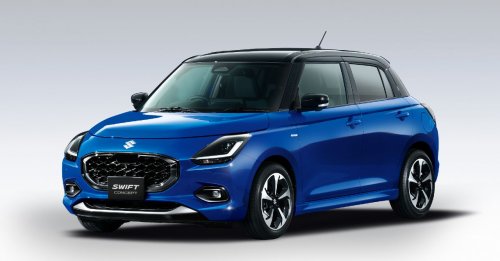
If you place a purchase order for the brand new Jimny in Japan today, it’s quite unlikely that it’ll be delivered anytime before the second quarter of 2019 – it’s that popular and unstoppable on its home turf. Suzuki is expecting a similar response from the rest of the world too, and rightly so. One of the most attractive features of the new Jimny is its retro styling. Also, and more importantly, the new Jimny is a gigantic leap forward – especially when compared to its predecessor, which, while being a capable off-roader, harboured a sort of animus towards asphalt. Moreover, the previous model was a bit long in the tooth – it was born in the seventies and was last updated around twenty years ago. Now, while Suzuki took their time to come up with the new model, they did astonishingly thorough work on addressing all the flaws of the previous model. And the result is a modernised off-roader that retains its core values.
What catches your attention the moment you lay eyes on the new Jimny is it’s square design, which immediately brings the images of the Mercedes G-Wagen and Land Rover Defender to mind. Thanks to its boxy shape, the Jimny appears bigger than what its dimensions suggest. It’s interesting design makes it look like a simple and traditional off-road vehicle. Hiroyuki Yonezawa, the engineer in charge of the project, proudly underlines that the entire vehicle is a significant improvement over the earlier version: ‘We designed it to retain the simplicity that has always characterised the Jimny, however, at the same time, we ensured to vastly improve its build quality and functionality. Even its off-road capability has been refined.’
Bigger heart
After having driven it both on the tarmac and some off-road terrain around Mount Fuji, we couldn’t help but conclude that Yonezawa has successfully achieved what he set out to do. The previous 1.3-litre petrol engine has been replaced by a 1.5-litre engine that generates 100bhp and 130Nm of torque. The powertrain is coupled to a five-speed manual gearbox – a four-speed automatic is optional. Once you get going, it’s immediately apparent that this engine doesn’t stand out for its exuberance. Rather, it puts the power down in a linear fashion, especially above the 3,000rpm mark. At lower rpms, there’s enough torque to help you tackle a slope or ford a stream. The chassis, on the other hand, is 50% more rigid. The suspension setup includes a three-link solid axle with coil springs, helping it perform well both on and off road. The comfort and ride quality have, without a doubt, gone up. In fact, the way it drives on asphalt is just brilliant – and it’ll certainly put a smile on your face. It does have body roll, but not as pronounced as the previous model. The steering does, however, lack any feedback. The brakes perform really well and have a lot of initial bite, without excessive pitching.
Off road, the Jimny continues to set the tone within its segment. Unlike most of its competition, which is oriented towards the urban jungle, the Jimny feels very much at home in the mud, dust and on steep inclines. For this small Suzuki, it’s no real challenge to go off the beaten path. So good was it off-road that we never felt the need to even engage low-range. It felt like driving a scaled down Toyota Land Cruiser, thanks to its sophisticated traction control system. The system overcomes obstacles without any effort, as it employs the brakes to the spinning wheel and sends power to the wheels with traction.
On smooth roads, the Jimny remains silent and comfortable . Visibility is excellent in all directions, but a rear parking camera, among other optional extras, would’ve been nice. The Jimny also has an automatic emergency braking system and lane departure warning system. Yonezawa adds: ‘If you accurately define the goal of the car you are designing and put it into action in a proper and consistent way, you can extend its lifecycle to infinity.’ If you think about it, he’s right. If the reliability of the old Jimny is anything to go by, the new model may as well be indestructible too.
India plans for the Jimny haven’t been announced as yet, but expect people lining up outside showrooms just as soon as they are. We think a five-door Jimny will make its way to India eventually – but not for the next year or so at the very least.

The interior is inspired by the original model, but the additional refinement, as well as the addition of new equipment, is clearly evident. Some of the switchgear and the infotainment system is lifted from the Suzuki parts bin, but there are some bespoke bits – such as the instrument cluster and the grab handle above the glovebox.
- Suzuki Jimny
Engine: 1,462cc / Four-Cylinders / 16 Valves
Fuel: Petrol
Transmission: 5-Speed Manual Gearbox Four-Wheel Drive
Power: 100bhp @ 6,000rpm
Torque: 130Nm @ 4,000rpm
Performance: Max speed: 150km/h 0-100km/h: 12 seconds Average consumption: 14.9km/l
Dimensions and weight: Wheelbase – 2,250mm Length – 3,550mm Width – 1,650mm Height – 1,730mm Weight – 1,145kgs
© Riproduzione riservata
























Write your Comment